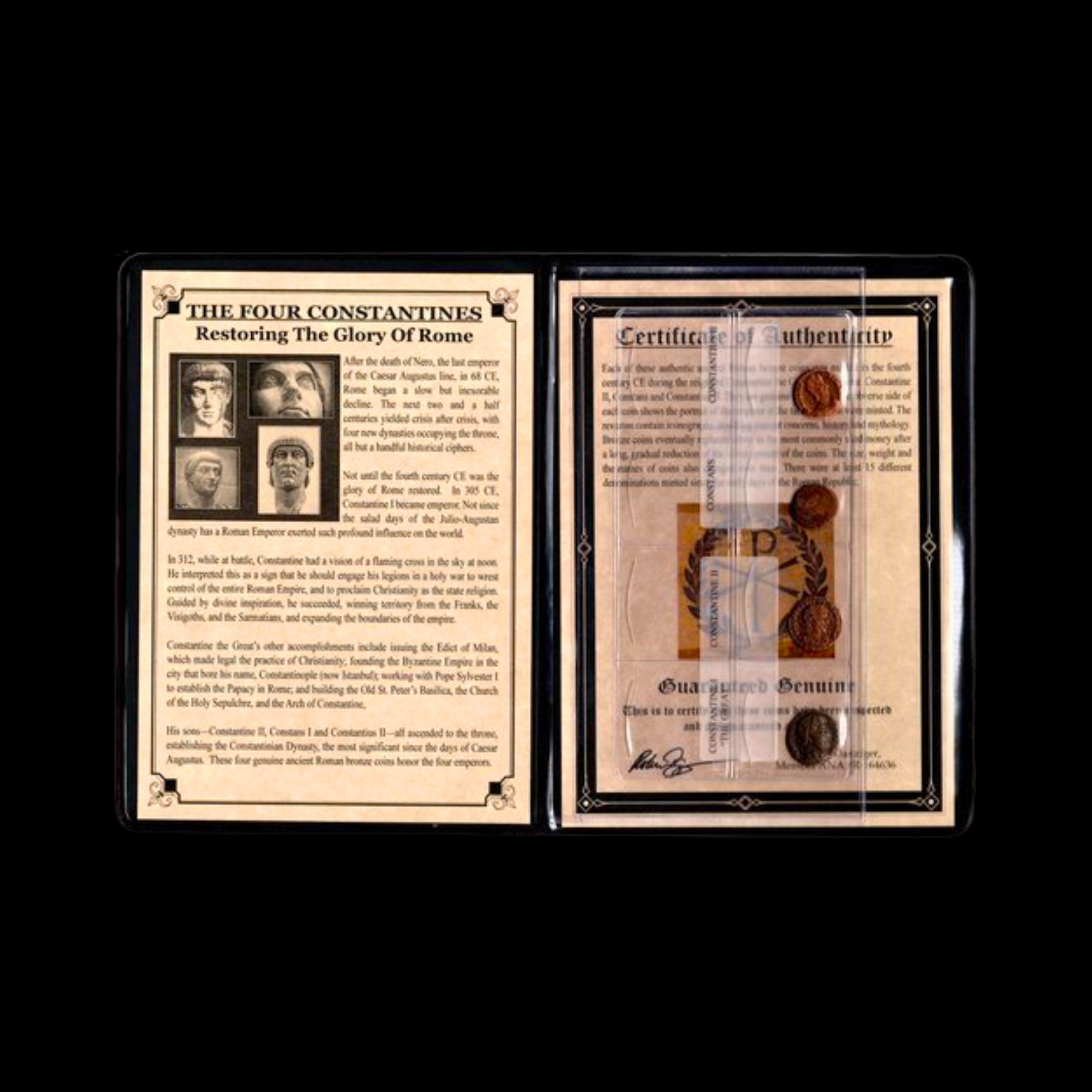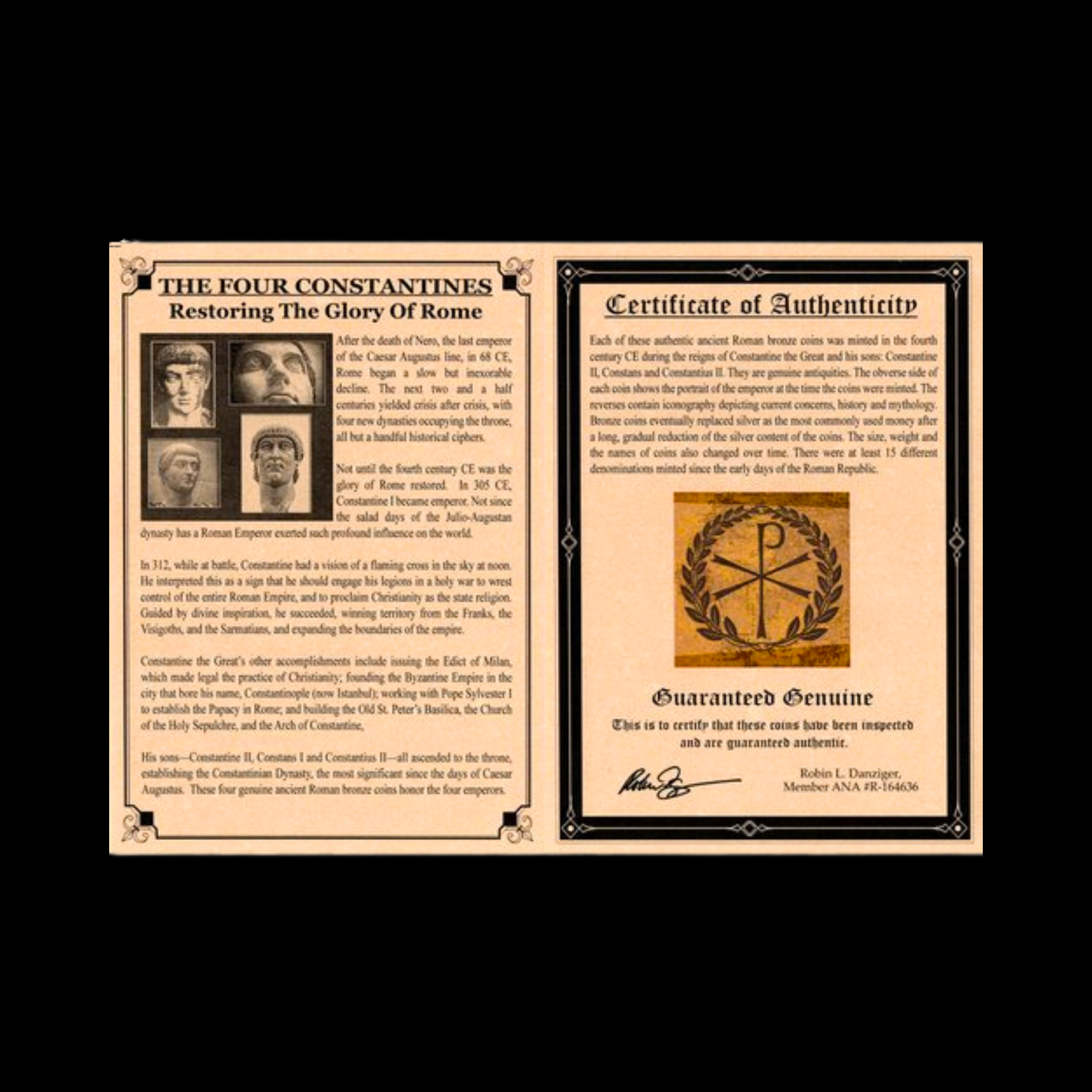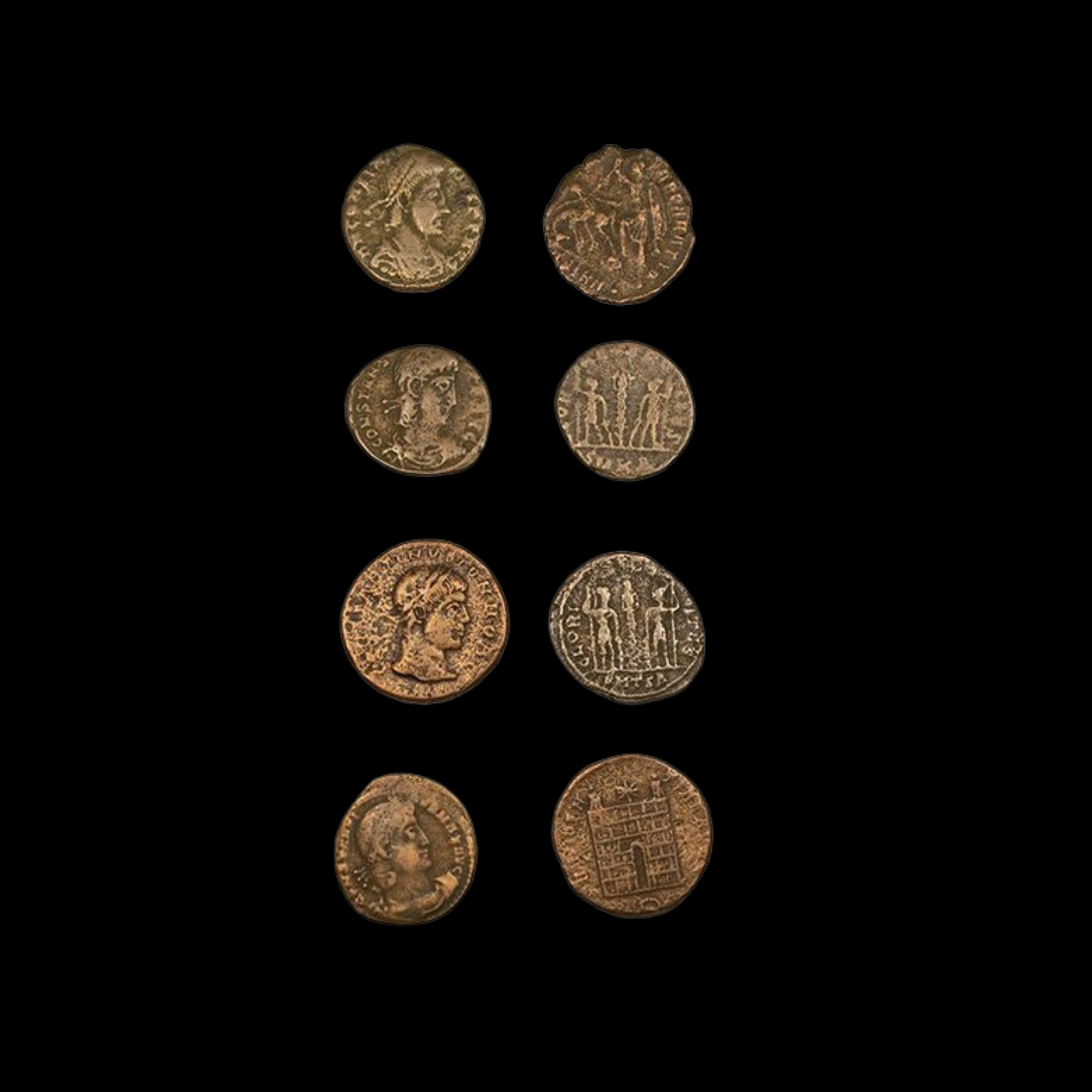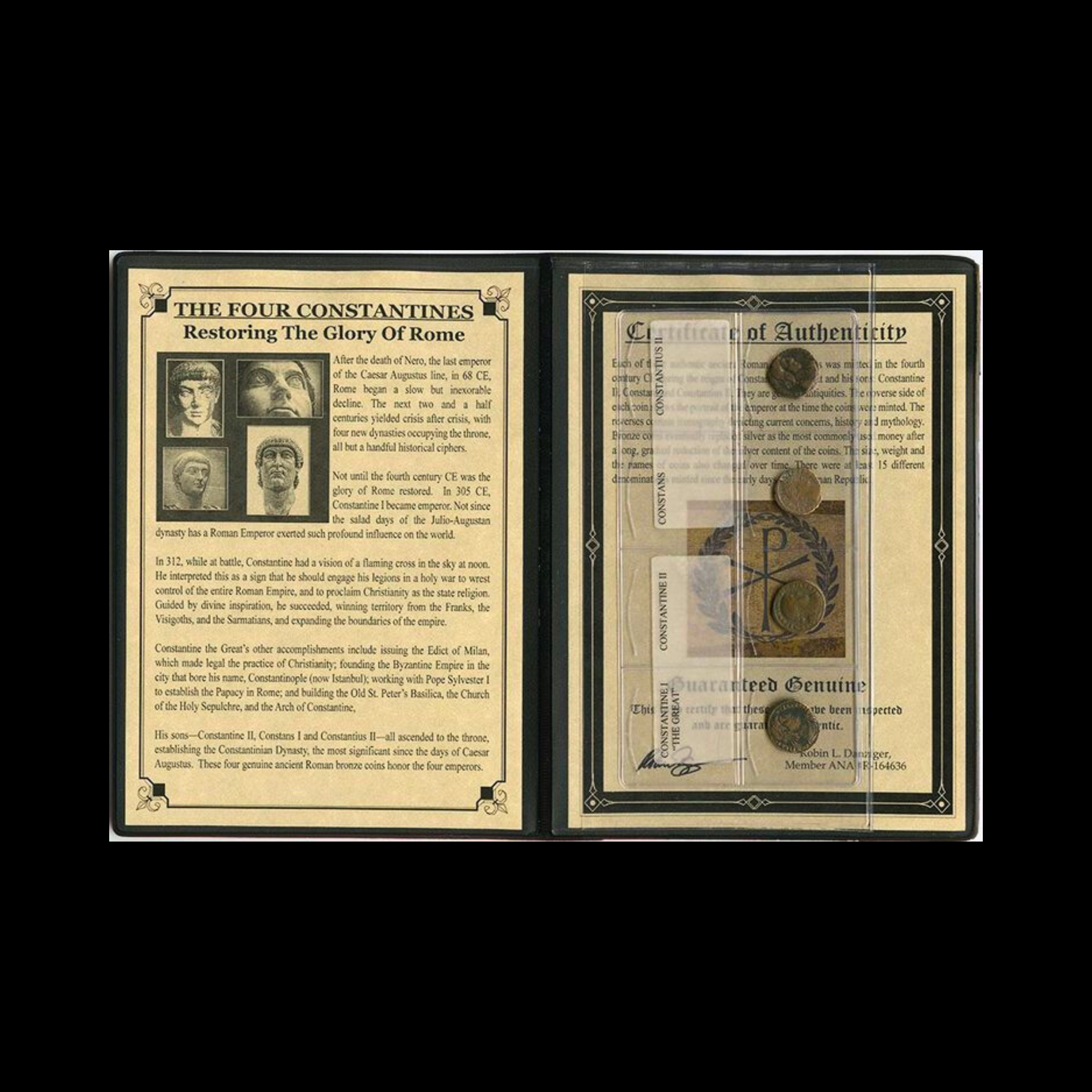 Image 1 of 7
Image 1 of 7

 Image 2 of 7
Image 2 of 7

 Image 3 of 7
Image 3 of 7

 Image 4 of 7
Image 4 of 7

 Image 5 of 7
Image 5 of 7

 Image 6 of 7
Image 6 of 7

 Image 7 of 7
Image 7 of 7








Constantius Chlorus I Roman AE3 (about 1,720-1,730 years ago)
This bronze coin (AE3 designation refers to its size) was issued during the reign of Constantius I Chlorus, who served first as Caesar (junior emperor) and later as Augustus (senior emperor) in the western Roman Empire. The coin dates from a critical period when Emperor Diocletian's reforms were restructuring the Roman Empire's governance through the Tetrarchy system (rule of four).
Coin Description:
Front side: Profile portrait of Constantius Chlorus wearing a laurel wreath and imperial robes, with his name and titles in Latin around the edge
Back side: Likely features either personifications of Roman virtues, military symbols, or religious imagery common on coins of this period
Technical Details:
Bronze composition (copper alloy)
AE3 denomination (referring to its size class in the Roman monetary system)
NGC certified (Numismatic Guaranty Corporation)
Minted between 293-306 CE in various western imperial mints
Condition: Certified by NGC, specific grade not provided
Historical Significance: This coin was minted during a pivotal period of Roman history when Emperor Diocletian had reorganized the empire under the Tetrarchy—a system where power was divided between two senior emperors (Augusti) and two junior emperors (Caesars). Constantius Chlorus initially served as Caesar in the West under Maximian before being elevated to Augustus in 305 CE when Diocletian and Maximian abdicated. He ruled over Gaul (modern France and surrounding regions) and Britain, successfully campaigning against invaders and rebellions. As the father of Constantine the Great (who would later reunite the empire and legalize Christianity), Constantius represents an important transitional figure between the Crisis of the Third Century and the later Christian Roman Empire. His coins reflect the imperial propaganda of the time, emphasizing legitimacy, military prowess, and divine support during a period when the Roman world was undergoing dramatic political and religious transformation.
This bronze coin (AE3 designation refers to its size) was issued during the reign of Constantius I Chlorus, who served first as Caesar (junior emperor) and later as Augustus (senior emperor) in the western Roman Empire. The coin dates from a critical period when Emperor Diocletian's reforms were restructuring the Roman Empire's governance through the Tetrarchy system (rule of four).
Coin Description:
Front side: Profile portrait of Constantius Chlorus wearing a laurel wreath and imperial robes, with his name and titles in Latin around the edge
Back side: Likely features either personifications of Roman virtues, military symbols, or religious imagery common on coins of this period
Technical Details:
Bronze composition (copper alloy)
AE3 denomination (referring to its size class in the Roman monetary system)
NGC certified (Numismatic Guaranty Corporation)
Minted between 293-306 CE in various western imperial mints
Condition: Certified by NGC, specific grade not provided
Historical Significance: This coin was minted during a pivotal period of Roman history when Emperor Diocletian had reorganized the empire under the Tetrarchy—a system where power was divided between two senior emperors (Augusti) and two junior emperors (Caesars). Constantius Chlorus initially served as Caesar in the West under Maximian before being elevated to Augustus in 305 CE when Diocletian and Maximian abdicated. He ruled over Gaul (modern France and surrounding regions) and Britain, successfully campaigning against invaders and rebellions. As the father of Constantine the Great (who would later reunite the empire and legalize Christianity), Constantius represents an important transitional figure between the Crisis of the Third Century and the later Christian Roman Empire. His coins reflect the imperial propaganda of the time, emphasizing legitimacy, military prowess, and divine support during a period when the Roman world was undergoing dramatic political and religious transformation.
This bronze coin (AE3 designation refers to its size) was issued during the reign of Constantius I Chlorus, who served first as Caesar (junior emperor) and later as Augustus (senior emperor) in the western Roman Empire. The coin dates from a critical period when Emperor Diocletian's reforms were restructuring the Roman Empire's governance through the Tetrarchy system (rule of four).
Coin Description:
Front side: Profile portrait of Constantius Chlorus wearing a laurel wreath and imperial robes, with his name and titles in Latin around the edge
Back side: Likely features either personifications of Roman virtues, military symbols, or religious imagery common on coins of this period
Technical Details:
Bronze composition (copper alloy)
AE3 denomination (referring to its size class in the Roman monetary system)
NGC certified (Numismatic Guaranty Corporation)
Minted between 293-306 CE in various western imperial mints
Condition: Certified by NGC, specific grade not provided
Historical Significance: This coin was minted during a pivotal period of Roman history when Emperor Diocletian had reorganized the empire under the Tetrarchy—a system where power was divided between two senior emperors (Augusti) and two junior emperors (Caesars). Constantius Chlorus initially served as Caesar in the West under Maximian before being elevated to Augustus in 305 CE when Diocletian and Maximian abdicated. He ruled over Gaul (modern France and surrounding regions) and Britain, successfully campaigning against invaders and rebellions. As the father of Constantine the Great (who would later reunite the empire and legalize Christianity), Constantius represents an important transitional figure between the Crisis of the Third Century and the later Christian Roman Empire. His coins reflect the imperial propaganda of the time, emphasizing legitimacy, military prowess, and divine support during a period when the Roman world was undergoing dramatic political and religious transformation.
Flavius Valerius Constantius (c. 250 – 25 July 306), also called Constantius I, was a Roman emperor from 305 to 306. He was one of the four original members of the Tetrarchy established by Diocletian, first serving as caesar from 293 to 305 and then ruling as augustus until his death. Constantius was also father of Constantine the Great, the first Christian emperor of Rome. The nickname "Chlorus" (Ancient Greek: Χλωρός, lit. 'the Pale') was first popularized by Byzantine-era historians and not used during the emperor's lifetime.
Of humble origin, Constantius had a distinguished military career and rose to the top ranks of the army. Around 289, he set aside Helena, Constantine's mother, to marry a daughter of Emperor Maximian, and in 293 was added to the imperial college by Maximian's colleague Diocletian. Assigned to rule Gaul, Constantius defeated the usurper Carausius there and his successor Allectus in Britain, and campaigned extensively along the Rhine frontier, defeating the Alamanni and Franks. When the Diocletianic Persecution was announced in 303, Constantius ordered the demolition of churches but did not actively hunt down Christians in his domain.[8] Upon becoming senior emperor in May 305, Constantius launched a successful punitive campaign against the Picts beyond the Antonine Wall.[9] He died suddenly at Eboracum (York) in July the following year.
































